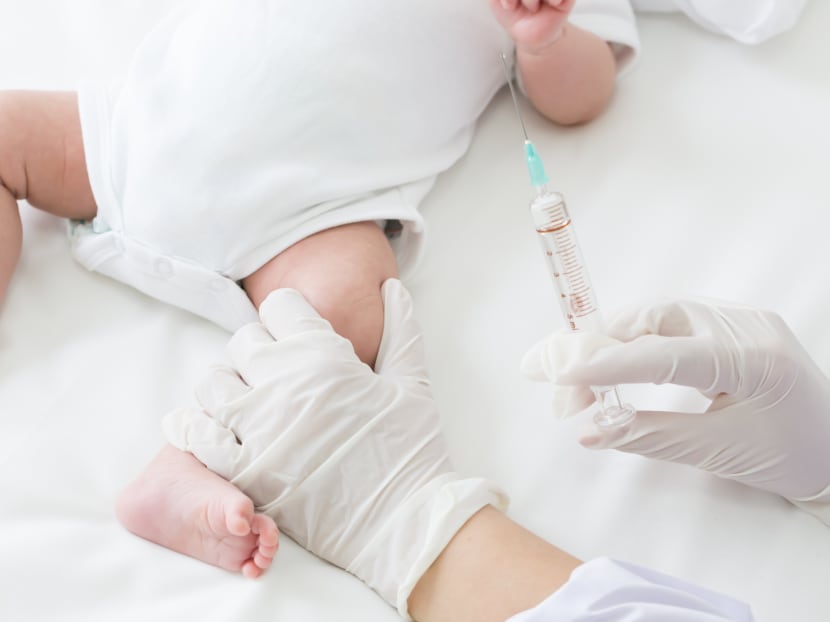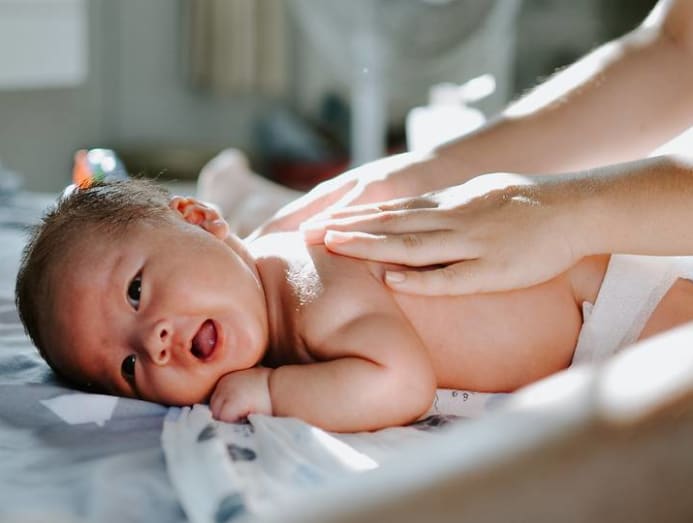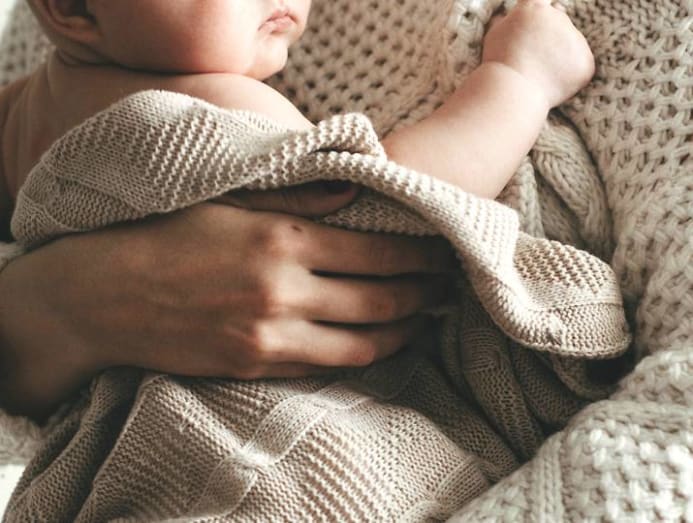Why do babies get so many vaccination jabs? And what are they for?
It may seem like your newborn is getting an injection every month. What are they for and why are they necessary?

(Photo: iStock/comzeal)
With news such as the detection of polio in Sabah and the measles outbreak in Samoa that took 72 lives – mostly infants – vaccination couldn’t be more pertinent. And Singapore isn’t immune to these diseases either.
“Last year, there appears to be a resurgence of measles, with nearly three times as many cases reported in the first four months compared to the same period last year,” said Associate Consultant Karen Donceras Nadua with KK Women’s And Children’s Hospital’s (KKH) Infectious Disease Service, Department Of Paediatrics. This is happening, despite the fact that immunisation for measles and diphtheria are compulsory by law in Singapore.
READ: Are two flu shots better than one when travelling with family during flu season?
“There can be outbreaks of vaccine-preventable diseases,” said Associate Professor Thoon Koh Cheng, who is senior consultant and head of KKH’s Infectious Disease Service at the Department Of Paediatrics. “We need to get vaccinated not only to protect ourselves but also the rest of the community, (also known as indirect protection or 'herd' protection) who may not be able to get vaccinated for various reasons or may have increased risk of disease.”
WHAT DISEASES ARE THE JABS FOR?
Vaccination is a rite of passage for newborns, from the moment they are born until 11 years old. In Singapore, the National Childhood And Adolescent Immunisation Programme protects against these 12 diseases and the health issues they can cause:
- Tuberculosis
- Hepatitis B
- Diphtheria
- Tetanus
- Pertussis (whooping cough)
- Polio
- Haemophilus influenza type B
- Measles
- Mumps
- Rubella
- Pneumococcal infection
- Human papillomavirus

The recommended schedule for individual vaccines below is for “healthy newborns starting immunisation in Singapore”, said Dr Thoon. It is also useful for parents whose babies missed their jabs or were born overseas to catch up on their vaccinations.
| Age | Vaccines | Diseases immunised against |
|---|---|---|
| At birth |
|
|
| 1 month |
|
|
| 3 months |
|
|
| 4 months |
|
|
| 5 months |
|
|
| 5 to 6 months |
|
|
| 12 months |
|
|
| 15 to 18 months |
|
|
| 18 months |
|
|
| 10 to 11 years |
|
|
| 9 to 26 years |
|
|
READ: HPV can cause cancers in both genders – so should boys be vaccinated too?
There are also combination vaccines (for example, the MMRV, 5-in-1 and 6-in-1) that parents can consider, which reduce the number of injections and trips to the doctor’s office. Combination vaccines are, according to HealthHub, "newer childhood vaccine formulations" that combine "vaccines against four, five or six diseases into a single injection".
However, these combination vaccines don’t cover pneumococcal infection, human papillomavirus, as well as optional vaccines such as rotavirus disease and Hepatitis A, so parents should take note and discuss with the doctor to extend the coverage.
According to Dr Thoon, an alternative schedule with combination as well as additional and optional vaccines might look like this:
| Age | Vaccines | Diseases immunised against |
|---|---|---|
| At birth |
|
|
| 2 months |
|
|
| 4 months |
|
|
| 6 months |
|
|
| 12 months |
|
|
| 15 to 18 months |
|
|
| 18 to 21 months | HepA (2nd dose; six months from first dose) | Hepatitis A |
| 10 to 11 years |
|
|
WHAT TO EXPECT DURING YOUR BABY’S JAB APPOINTMENT
Be prepared to soothe a crying baby for a few seconds after the injection as the needle does cause brief pain. What are also common are soreness, slight redness and even a small lump but they usually resolve on their own, according to HealthHub.

Parents should also be aware that it is normal for their child to be a little irritable for a few hours or even a day or so after the injection. HealthHub mentioned that there may also be a slight fever (more than 38 degrees Celsius) that may last one to two days. To take care of that, the doctor may prescribe a small dose of paracetamol for pain or fever.
WHEN SHOULD YOU DELAY THE SHOTS?
It is best to seek the doctor’s opinion about delaying immunisation if your baby is running a high fever, according to HealthHub. Equally important to discuss with your doctor is when your child has had a serious reaction to a previous injection or is allergic to eggs or anything else. Those jabs can also wait if your child is being assessed or treated for any disease that affects the immune system.
WHAT IS THE COST?
Medisave can be used to pay for all the vaccinations under the National Childhood Immunisation Schedule. Patients and their immediate family members can use up to S$500 per year, per Medisave account to pay for the approved vaccinations. The vaccine for human papillomavirus (HPV) is currently fully subsidised in an opt-in, school-based vaccination programme for Secondary 1 female students.
However, charges apply to optional vaccines such as chickenpox, rotavirus, Hepatitis A and meningococcal, so it's best to check with the doctor at selected clinics and hospitals.





